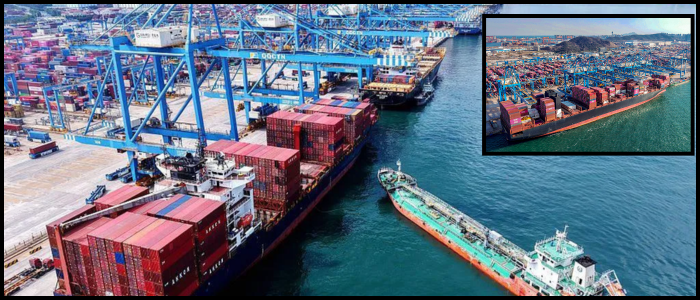Though initially businesses absorbed a portion of the additional costs, they are now likely passing along some of the burden to consumers. Translation: Americans will have to pay more in the months ahead.
Most Affected: Electronics, Apparel, and Watches
Electronics, especially computers, are one of the worst-performing categories. Even if computers are assembled in the US, parts come from a variety of other countries, such as China, Taiwan, Malaysia, Vietnam, and India.
Most products encounter a 30% tariff en route to China, with computer-related tariffs ranging between 20%-25%.
Not long ago, these tariffs almost doubled to 19-20% for Taiwan, Vietnam, and Malaysia. Even if these tariffs are left in place, economists at the Yale Budget Lab estimate that short-term (2–3 years) prices for computers and electronics could rise 17%, while prices would remain high in the long run (3–10 years) with a 7.7% increase.
Prices on clothing are also expected to go up. Among the countries where American firms source the most of their apparel are China, Vietnam, India, and Bangladesh — all nations that will see much higher tariff levels.
That could have a major impact on consumers, given that it is one of America's biggest imports after apparel.
Wristwatches, especially from Switzerland, can also get pricier. Reciprocally, Swiss watches are now subject to a 39% tariff.
Economists predict that the cost of leather goods, such as many watch bands, may go up 39 percent in the short term and 18 percent in the long run.
Price Increases Also Possible For Shoes, Alcohol, Toys, and Furniture
The tariffs, which are at least 19% on shoes made in China, Vietnam, and Indonesia, would likely lead to higher prices, particularly for leather footwear.
And of course, there is alcohol. U.S. wine and spirits revenue is derived from imported products. Recent data show that 35% of alcohol revenue funds are derived from imports in the U.S. Tariffs on European Union beverages, including whiskey, vodka, and wine, that will also face higher tariffs of 25% up from 10%, should eventually produce price rises.
The United States will be hit by the new trade rules not only for furniture—counting on Vietnam and China, America's top suppliers—but also toys, with China and to a lesser extent, Vietnam as the first two countries.
The price hikes related to tariffs on existing Chinese goods and new duties on imports from Vietnam have already led toy companies to warn that prices could rise more.
When Will Prices Rise?
However, the full impact of tariffs generally takes about eight months to be seen in consumer prices, according to economists at Goldman Sachs.
While goods remain in cold-storage facilities, once they run out and companies have to start taking new deliveries of items that will be costlier, Americans could find themselves paying more for a broad array of everyday purchases a few months into the year.
Business

Trump's Tariff Hikes May Raise Prices on These Everyday Items

Although former President Donald Trump said tariffs would not lift prices, fresh data and expertise indicate that is not likely to be the case. His newest round of tariff hikes, which took effect Thursday, is likely to raise the cost of imported goods from a range of nations and could stoke inflation in the U.S. economy.















